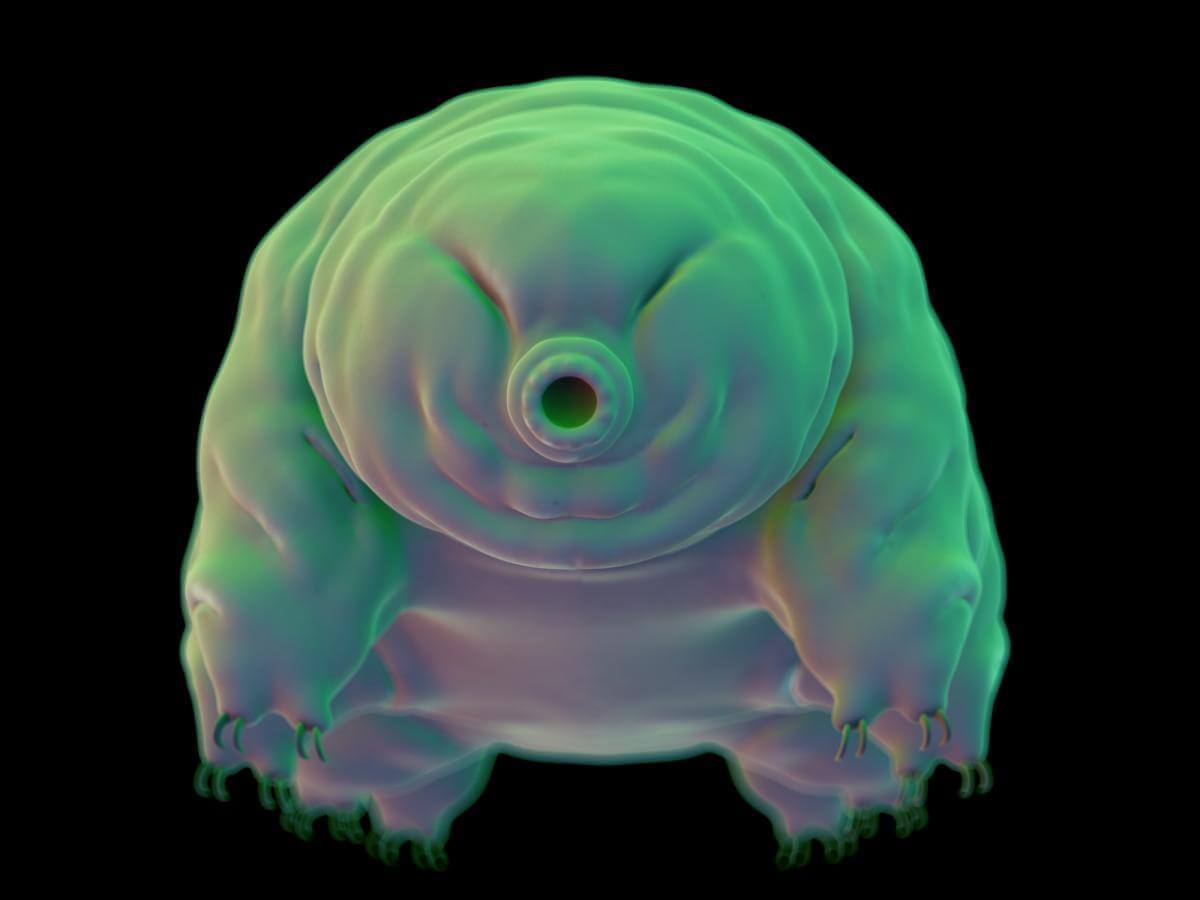The Tiny Creature That May Teach Us How to Survive Radiation


Microscopic tardigrades are also known as water bears, because of their penchant for living in damp environments and their bear-like physical attributes. A colored electron scanning micrograph of a tardigrade shown at about 250 times its size. (Steve Gschmeissner/Science Photo Library)
Tardigrades may be microscopic, but they contain mammoth adaptability for surviving extremes, including deadly radiation.
A tardigrade, a 1-millimeter micro-animal that mostly lives in mossy waters and soils, can survive extremes of heat and cold — from 300 degree F water to supremely chilled environments of absolute zero. They can tolerate pressures six times that of the deepest ocean reaches. They can even survive in the vacuum of space.
A tardigrade’s survival talents include a process called cryptobiosis, in which it brings its metabolic processes nearly to a halt. It can also nearly completely dehydrate, to about three percent or so of its normal water content. It can survive for a decade like that.

(Eraxion)
An Exemplar of Radiation Resistance
A study published in September 2016 in Nature Communications shows that they are also adept at bypassing the effects of radiation. In fact, they can withstand hundreds of times the amount of radiation that would kill a human.
They are able to avoid the effects of radiation because they have a protective protein called Dsup, short for “damage suppressor,” which coats their DNA and provides resistance, according to the study. They can also repair damaged DNA and RNA and can produce fatty acids, which humans can’t do, even though they are essential for brain and nerve function and overall cell health.
Kunieda and his colleagues also found that transferring some of the Dsup to human cells helped them lessen x-ray-induced damage up to 40 percent, a skill that one day might translate in helping humans better withstand radiation therapy treatments — or equip us for life on Mars.
